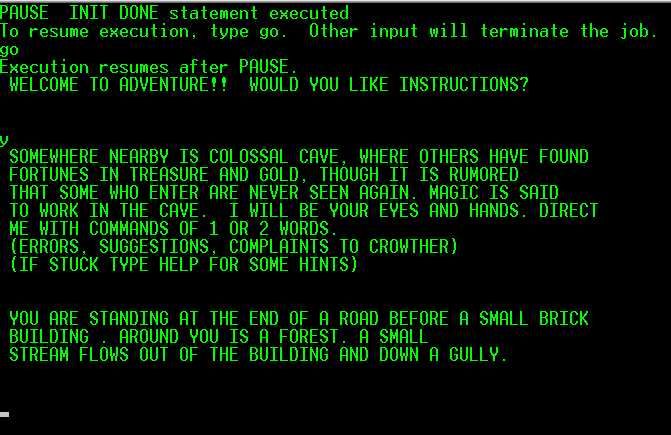Notes Towards Day 20: Going Virtual
Class Keeping:
Reminder to visit some virtual worlds, some of which I’ve listed on the syllabus. If you know of others, feel free to visit those. You may want to compare experiences between worlds, though this isn’t necessary.
As you’re exploring these worlds, keep a 5,000 foot view of things. That is, be somewhat meta about your observations. Here are some things to think about:
- First, think about the technology and your reaction to it. How did you approach this assignment? Were you worried, fearful, excited? Why? Do you find using the technology easy or hard? Fun or challenging? Did you get help or did you want to explore on your own?
- Why did you create the avatar you did? (We’ll be thinking about this some today, but maybe being 3D and actually interacting with people changes what you do.)
- What about the avatars around you? What do you notice?
- Did any try to interact with you? How did you handle that?
- Did you try to interact with anyone? Why or why not?
- What did it feel like to be in this world?
Please try to take some screen shots or some video if something interesting happens. Many virtual worlds actually have this capability built in, but you can also use utilities found on your computers to do this.
Now entering the fourth/final section of the course:
heads up re: fourth (multi-media) project!
Looking back for a moment first:
Notes from Monday
Notes from last Wednesday are on-line
(we’d like y’all to assume some of this responsibility…)
Short summary version of our conversation:
we broke into our “superreader” groups to
1) imagine an updated alternative to Watchman
(perhaps a grown-up woman’s graphic novel?)
2) think about whether we have learned,
from this representation of “history” and urban poverty,
not to repeat such patterns, or…?
We reported back on ways to make
the novel more “female-friendly,”
and discussed the possibility that it–
in making fun of superhero fantasies–
it had actually already been written for
“ironic, over-analytical, self-reflective women.”
Curiously, our attempts to re-write the text to “appeal” to women turned into a conversation about eroticization, about what each gender finds arousing.
Why was the treatment of class and race, however, so not-ironic? To what degree are the psychiatrist and the child-reader, in particular, models for our reading experiences? What sense can we make/what can we do w/ the dark humor that pervades the book?
And now to begin thinking about identity and gender in cyberspace.
 Sherry Turkle is the Abby Rockefeller Mauzé Professor of the Social Studies of Science and Technology in the Program in Science, Technology, and Society at MIT and also heads the MIT initiative on Technology and Self. What we read for today comes from her 1995 book Life on the Screen: Identity in the Age of the Internet. Written during the early days of the Internet, the book outlines many of the concepts surrounding identity and being online that are almost commonplace now with the advent of Facebook, blogs, etc.
Sherry Turkle is the Abby Rockefeller Mauzé Professor of the Social Studies of Science and Technology in the Program in Science, Technology, and Society at MIT and also heads the MIT initiative on Technology and Self. What we read for today comes from her 1995 book Life on the Screen: Identity in the Age of the Internet. Written during the early days of the Internet, the book outlines many of the concepts surrounding identity and being online that are almost commonplace now with the advent of Facebook, blogs, etc.
She used MUDs for her research in this chapter. MUDs are multi-user dungeons. They do not have graphics the way that more contemporary games have. They rely strictly on text to describ e characters, rooms, etc. Players typed descriptions of themselves and had to learn commands for moving fighting and interacting with others. On the right is a picture of what this looked like. (via Wikipedia).
e characters, rooms, etc. Players typed descriptions of themselves and had to learn commands for moving fighting and interacting with others. On the right is a picture of what this looked like. (via Wikipedia).
Our second reading involved visual representations rather than textual ones. While the first looked at how people described themselves and the reasons why they chose the gender that they chose, this article presents avatars to people and asks them about how they perceive these avatars and whether they would choose that avatar for themselves. This is a more typical scenario for many virtual worlds and games today. One is present a collection of possible avatars and one must choose.
A meta-comment about this kinds of work. Turkle’s article uses qualitative research methods. That is, she interviewed people to find out descriptive information about their perceptions of their online presentations. Nowak and Rauh’s work is quantitative. Their research asks a series of questions that use a scale, which is then analyzed using a variety of statistical methods.
Since many of you reported that the small groups are working, we’re going to stick with that for now, but we want you to choose your groups as The Doctor suggested. In your groups, you may wish to address the following questions, but of course, you may venture elsewhere. We would like for you to elect someone to post the gist of your conversation online. At the end of the conversation today, what we want you to report back is a question that you would like the class to continue thinking about/talking about. Depending on time, we will start to address the questions today or on Wednesday.
1.Imagine that you are going to join a MUD loosely based on medieval times. Write 2-3 sentences describing your persona for the MUD. (We’ll come back to this in a moment.) Rebecca offeres us an example.
2. In Turkle’s piece, she discusses how men and women took on opposite genders in order to behave in ways that are more accepted or more comfortable from the opposing gender identity. What does this say about people’s perceptions of behavioral gender norms?
3. Turkle also discusses the way people perceive online relationships (especially sexual ones) as real or not real. Consider that this was over 10 years ago. Do you think the distinction still holds? Why or why not? In the scenarios that she describes, how would you react? What is the relationship between gender and technology in your concept of faithfulness?
4. From Nowak and Rauh: Some have seen the potential for cyberspace to be free from gender and class considerations, a place where the binary categorization of either male or female becomes a false dichotomy. It has been argued that in cyberspace androgyny becomes a continuum with an opportunity to be feminine, masculine, both, or neither. Both Turkle and Nowak and Rauh show this not really to be the case. Discuss.
5. It may be that people will focus more on matching characteristics of themselves on a social context, but will choose avatars with the highest credibility or likeability rating in a workplace context, or that some
people will be more likely to match different features than others. What kinds of avatars would you choose in different contexts? And what complications arise as those contexts blur?
6. What kinds of understanding does this kind of research–qualitative and quantitative–add to our thinking about gender? About technology? About the intersection of the two?
6. Turn to your own avatars–both the textual one you just created and the graphic ones. How does the use of graphical tools affect how you build your avatar?
7. How gendered is your avatar? Were you happy with the choices offered in terms of gender?
8. Most people use their real photo in places like Facebook and change this fairly frequently. How is this like an avatar or not?

![Reblog this post [with Zemanta]](http://img.zemanta.com/reblog_e.png?x-id=a846f4f9-a22e-4775-95eb-5ff37a8e68d9)

Trackbacks and Pingbacks
Comments are closed.